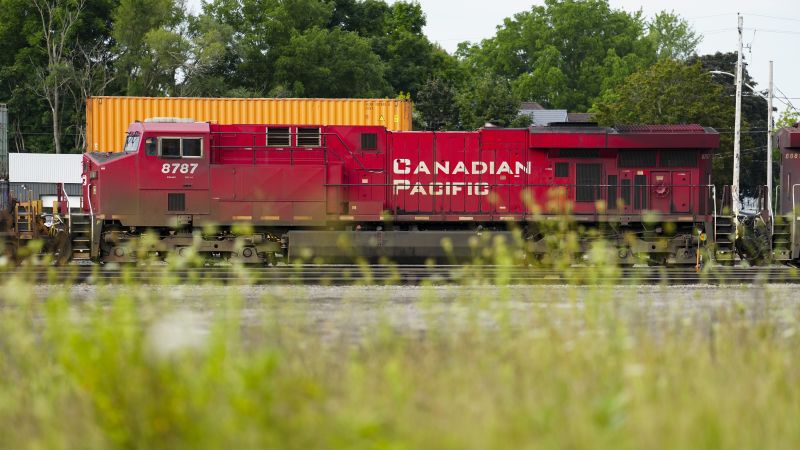Canadian Labor Minister Steve MacKinnon took action Thursday to end the shutdown of the nation’s two major freight railroads less than one day after it started, referring the labor dispute that had closed the railroads to binding arbitration.
“I’ve directed the Canada Industrial Relations Board to assist the parties in settling the outstanding terms of their collective agreements by imposing final binding arbitration,” MacKinnon said in press conference Thursday. The government also ordered a resumption of activities and extending the term of the current collective agreements until new agreements have been signed.
The move is a victory for Canadian National and Candian Pacific Kansas City Southern, the two major railroads, which had been seeking government intervention. They said they had been forced to shut down their networks, despite the disruption it would cause, because there was no way to reach a deal with the Teamsters union that represents 9,000 of their workers.
MacKinnon said he assessed both parties were at a “fundamental impasse.”
“There is no question that we are at an impasse. The issues remain, the parties remain very, very far apart on these issues… it’s not my job to pick sides here,” MacKinnon said.
The two railroads and the Teamsters did not immediately respond to a request for comment.
But with two national railways with suspended operations, “it is the government’s duty and responsibility to ensure industrial peace in this critically vital sector,” he said at the press conference.
The move is a setback for the union, which had argued the best and fairest way to settle the labor dispute was to have the two sides reach an agreement at the bargaining table. They blamed greed by railroads negotiators and management demands that the union argues would hurt rail safety and the quality of life of its employees, a charge the railroads deny.
Businesses groups, including the chambers of commerce in both Canada and the United States, had also been calling for government intervention, saying the economies of both countries could be damaged by the shutdown.
In the press conference Thursday, MacKinnon described the conversations with Americans as “helpful advice,” as they had also gone through similar processes with their own labor conflicts and work stoppages.
But ahead of the lockout that started early Thursday, MacKinnon had refused to use his powers to refer the matter to binding arbitration and keep the railroads on the job.
The shutdown demonstrated how closely linked Canada and the United States’ economies are, with many industries depending on the free movement of goods across the border for their efficient operations. About 30% of the freight carried by the two railroads cross the US-Canadian border, and without rail operations there is not nearly enough truck capacity to move the goods.
An extended labor stoppage threatened the US auto industry: some US auto plants could have been forced to temporarily shut down if they were unable to get engines, transmissions or stampings done at Canadian plants. US farmers might have found that shortages of fertilizer and US water treatment plants near the Candian border, and they could have run of out chlorine they use to purify water.
This was the first time that both major Canadian railroads have shut down at the same time due to a labor dispute. The most recent work stoppage in the industry was a 60-hour strike at Canadian Pacific in 2022. Before that, there was a nine-day strike at Canadian National in 2019.
This is a developing story and will be updated.
Read the full article here




